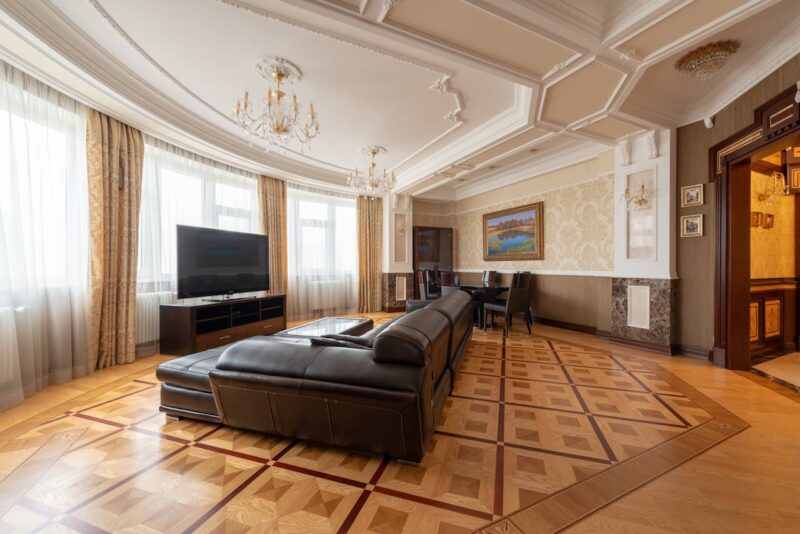Old buildings have a natural charm that no new design can copy. Every wall and curve tells a story that deserves to stay visible. Modern minimalism adds calm, light, and balance that make those old details stand out. Read more in the following sections to see how both styles can work together in a fresh, natural way.
Many people today want homes that keep historic character but feel open and uncluttered. The right approach can highlight age and texture without making the space heavy or dark. Each detail matters, from color choices to light placement.
Keep reading to explore simple and smart ways to mix old architecture with modern minimalism.
Preserve Original Walls, Moldings, and Arches
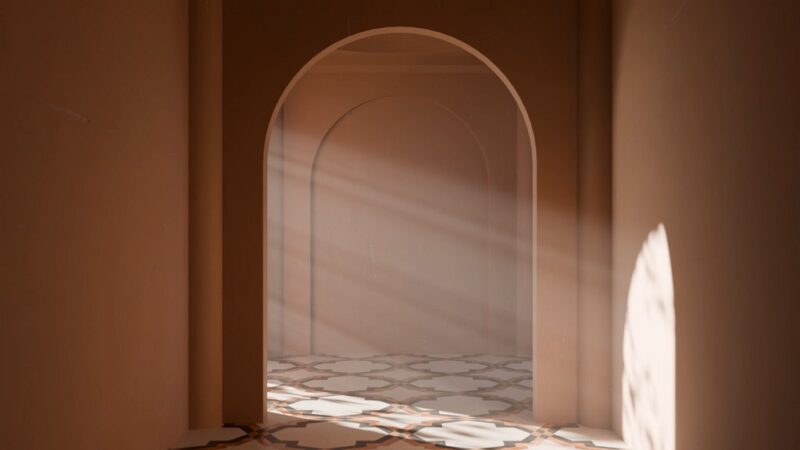
Every old structure carries design treasures that deserve to stay visible. Moldings, arches, and textured walls reflect craftsmanship that gives a space personality.
Instead of covering or replacing them, careful restoration can anchor the design and bring out the depth that modern simplicity often lacks.
The goal is to let each aged surface tell its story without making the room feel dated.
How to Keep the Balance
- Retain visible imperfections that add history, but seal surfaces to prevent decay.
- Repaint or polish only what needs care, so natural tones stay true.
- Combine neutral modern colors like soft gray or off-white to frame old features.
- Keep decoration simple to let architectural details stand out.
A preserved arch or original molding becomes the centerpiece of a minimalist interior. Once lighting and furniture fall in line, the result feels honest and quietly elegant.
Use Contrasting Flooring for a Grounded Blend
Flooring plays a major role in linking history with a clean modern look. Original stone or reclaimed wood carries warmth and story, while smooth concrete or large-format tiles provide clarity and flow.
Using both creates an effortless transition between rustic and refined. Each surface defines its own zone without breaking the harmony of the whole.
Flooring Options That Work Well
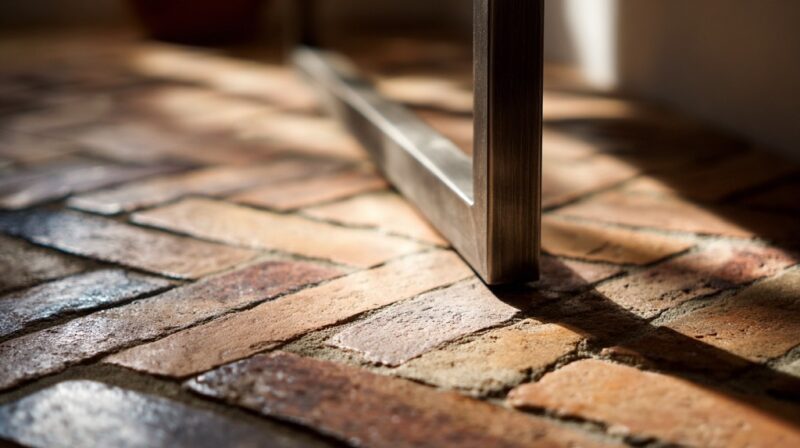
- Reclaimed wood adds warmth and character with visible grain.
- Concrete or terrazzo fits modern simplicity with smooth texture.
- Thin brick flooring serves as an excellent middle ground, perfect for combining rustic architecture with minimalist design. It gives authentic color and pattern while keeping a low profile suitable for modern layouts.
- Natural stone tiles bridge traditional craftsmanship with durable practicality.
The right flooring unites different eras under one aesthetic. Proper contrast keeps the design rooted in heritage yet free of clutter, allowing space to breathe naturally.
Insert Glass Partitions or Doors to Reveal the Past
Transparency can bring history to life. Glass partitions or doors create a gentle divide without cutting off light or sightlines.
Imagine walking through an old hallway and catching a glimpse of stone walls or wooden beams through clean glass panels.
That single design choice connects eras with elegance.
Ways to Use Glass with Purpose
- Replace solid doors with framed glass to open up smaller rooms.
- Combine metal frames with frosted glass for privacy without heaviness.
- Use floor-to-ceiling glass panels near original walls to showcase texture and depth.
- Align new openings with old structural lines for visual flow.
Glass creates a sense of freedom while preserving what already exists. The space feels alive, honest, and bright, without losing the strength of the architecture that came before.
Keep Furniture Minimal So Space Feels Open
Heavy furniture can drown the story of a building. Minimal pieces, clean shapes, and natural materials keep the focus on the architecture itself.
The right furniture selection works like punctuation. It gives rhythm to the room without overwhelming it.
Additional Tips
- Choose one statement piece and build the rest around it.
- Keep upholstery light and neutral to avoid visual clutter.
- Mix old wooden chairs with a modern steel table to bridge eras.
- Leave enough space between furniture pieces so structure breathes.
The aim is not emptiness but focus. Minimal furniture allows light to flow and old craftsmanship to shine through, giving the room balance and calm.
Expose Brick or Stone and Leave It Unpainted
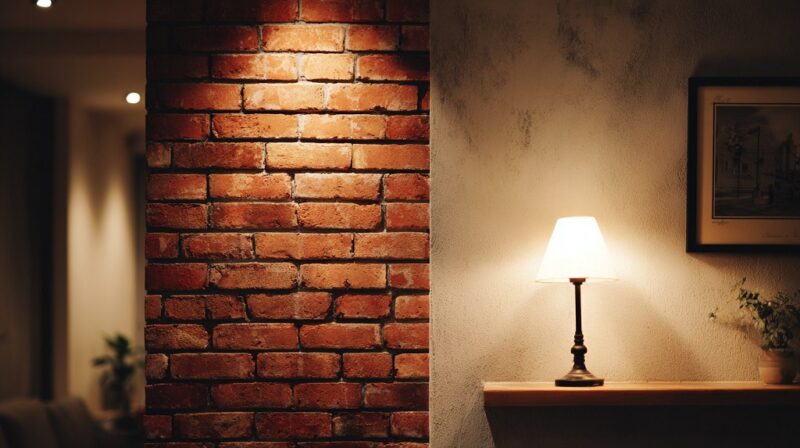
Raw surfaces carry a power that no modern coating can match. Exposed brick or stone introduces texture, warmth, and authenticity to any setting.
Each mark on the wall tells a story of time and weather. Keeping it unpainted honors its natural depth while adding contrast to smooth, minimalist finishes nearby.
How to Work with Natural Surfaces
- Clean and seal the material rather than cover it.
- Pair rough textures with sleek furniture or metal details.
- Use warm lighting to enhance surface shadows and grain.
- Frame old brick areas with white or pale walls for definition.
Exposed materials bring honesty to design. When combined with modern restraint, they create interiors that feel grounded, timeless, and alive with character.
Use Metal and Steel to Frame Historic Features
Metal can transform old architecture without stealing its voice. A thin steel line around an arch or window defines form with quiet confidence. Black frames against plaster, brass beside old oak, brushed iron near stone, every pairing gives balance and focus. The contrast feels calm and strong at once.
When you touch a cool steel handle in a room filled with warm wood and filtered light, the feeling makes sense. That meeting of strength and softness tells the story better than any decoration.
Try this in your space
- Add black framed glass doors between historic rooms
- Outline wooden openings with slim metal borders
- Choose matte finishes to maintain a natural texture
Keep a Unified Neutral Palette
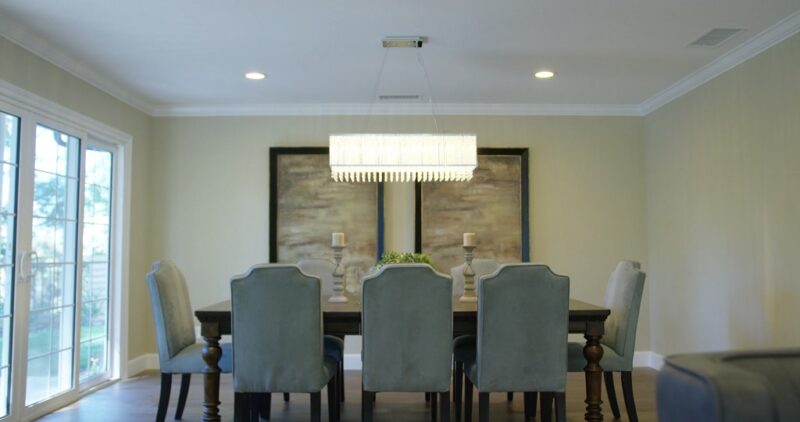
Color brings structure through silence. Neutral tones make historic texture and modern form belong to each other. Shades of white, clay, and soft gray allow brick, plaster, and stone to stay honest. The space feels collected, not empty.
Light replaces color as the main element of mood. As sunlight shifts across uneven walls or wood grain, it shows depth that bright hues would hide. Neutrality here is not absence. It is discipline that makes every material visible.
Highlight Architectural Focal Points
Every structure hides a feature that defines its soul. It could be a column, a staircase, or a mantle that draws attention the moment you enter. Keep that element visible and let everything else serve it. A single focus keeps a room stable and alive.
How to make it work
- Add soft light above or beside the key feature
- Avoid extra decoration near it
- Keep surrounding colors muted to direct the eye
A room with one clear anchor always feels intentional. It tells the visitor where to look and what to feel.
Use Simple Transition Zones Between Old and New
A seamless transition holds the whole design together. The meeting point between ancient craftsmanship and new construction must feel natural, not forced. Smooth thresholds, aligned sightlines, and consistent textures can make the change invisible to the eye. The key lies in control, not imitation.
Stone floors may meet modern concrete if joints stay clean. Wood beams may connect with metal framing when the edges are left precise. Each material keeps its honesty, but together they create flow. The old remains proud, the new feels welcome. That balance defines real sophistication.
The Bottom Line
Mixing old architecture with modern minimalism is not about decoration. It is about respect. Every stone, beam, and frame has meaning, and every clean surface around it should help that meaning breathe.
A thoughtful balance of light, color, and texture keeps the spirit of history alive while giving it a place in the present.

